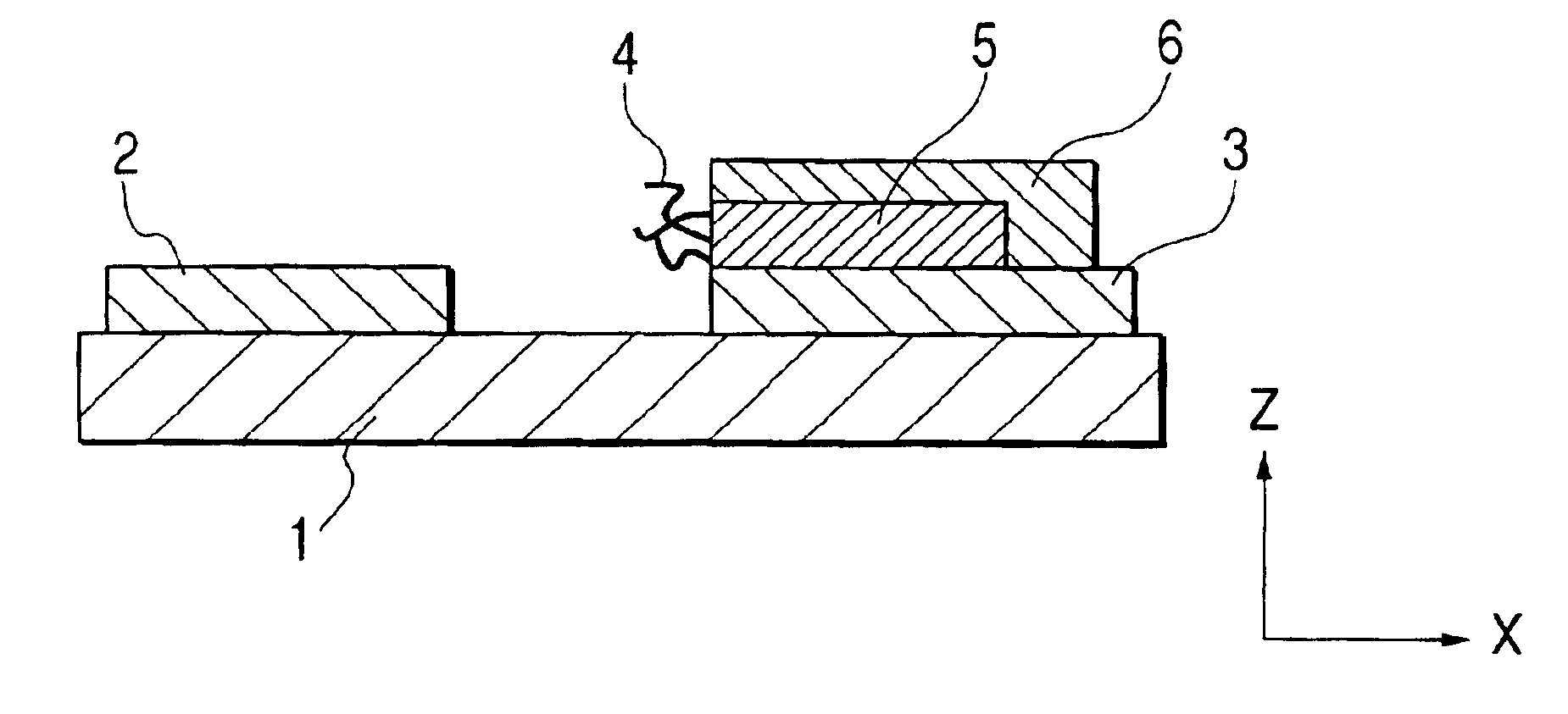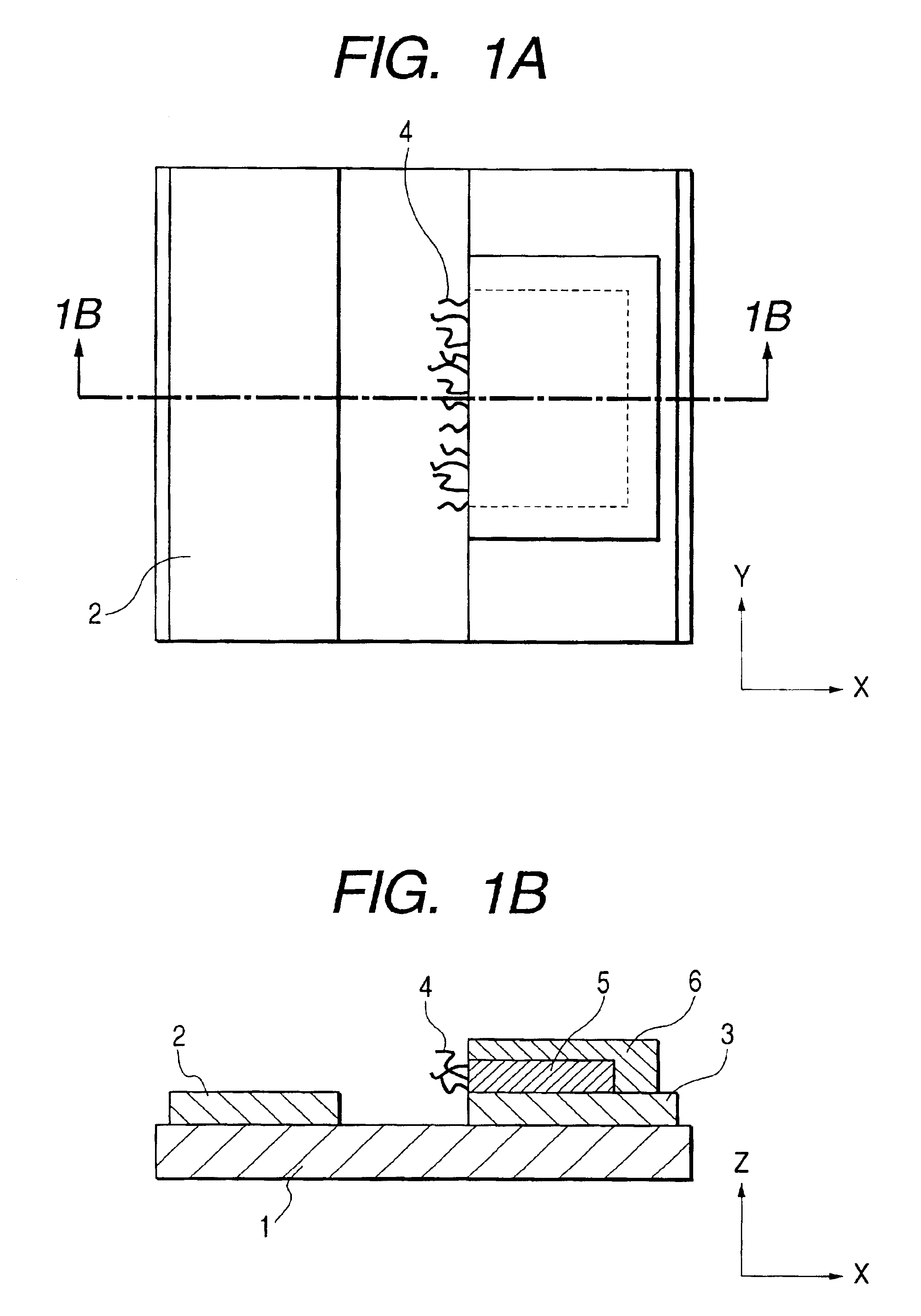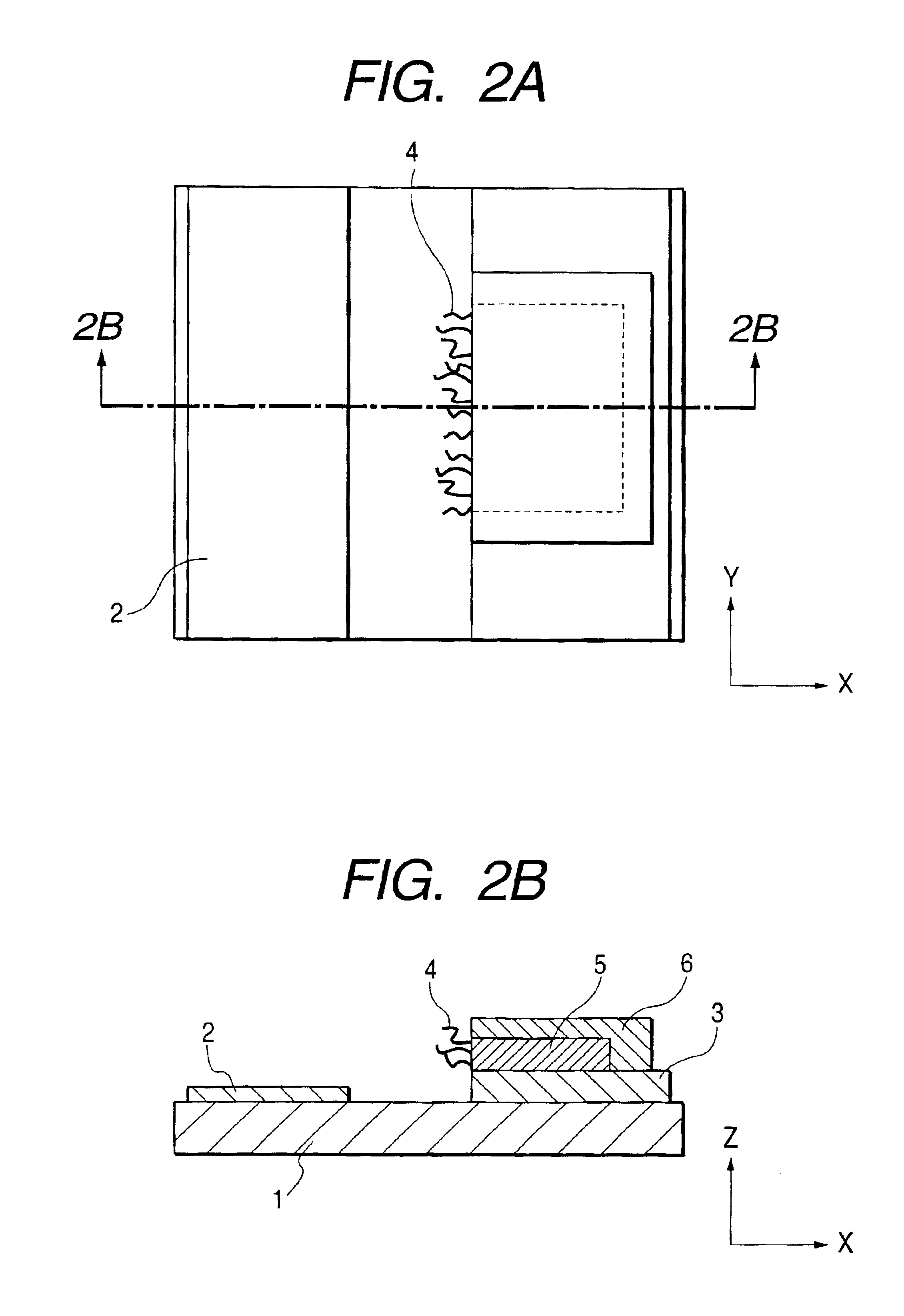Electron-emitting devices, electron sources, and image-forming apparatus
a technology of electron sources and electron emitting devices, applied in the manufacture of electric discharge tubes/lamps, discharge tubes with screens, discharge tubes luminescnet screens, etc., can solve the problems of increasing driving voltage, large capacitive power consumption, and beam profile expansion, and achieve excellent electron emission efficiency, small capacitance components, and excellent durability
- Summary
- Abstract
- Description
- Claims
- Application Information
AI Technical Summary
Benefits of technology
Problems solved by technology
Method used
Image
Examples
example 1
[0174]In the present example, the basic configuration is comprised of the configuration shown in FIGS. 1A and 1B as described in the above-stated embodiment.
[0175]The steps for fabrication of the electron-emitting device according to the present example will be described below in detail with reference to FIGS. 5A to 5E.
(Step 1)
[0176]After a silica substrate used as the substrate 1 was cleaned well, a Ti layer 5 nm thick and a Pt layer 500 nm thick, not shown, were first consecutively evaporated over the entire surface of the substrate by sputtering, in order to form the extraction electrode 2 and the negative electrode 3.
[0177]Then a resist pattern was formed with an unrepresented positive photoresist (AZ1500 available from Clariant) by the photolithography process.
[0178]Using the patterned photoresist as a mask, the Pt layer and Ti layer were then subjected to dry etching with Ar gas to pattern the extraction electrode 2 and the negative electrode 3 with the electrode gap (the widt...
example 2
[0201]The electron-emitting device according to Example 2 will be described below with reference to FIGS. 2A and 2B. FIGS. 2A and 2B are schematic views of the electron-emitting device according to Example 2 of the present invention, wherein FIG. 2A is a plan view thereof and FIG. 2B a cross-sectional view along 2B—2B in FIG. 2A.
[0202]The electron-emitting device in the present example was fabricated in the same manner as in Example 1 in the structure and others except that the thickness of the extraction electrode 2 in Example 1 was changed to 200 nm, and If and Ie were measured therewith.
[0203]In the structure of the instant device, the thickness of the negative electrode 3 was larger than the thickness of the extraction electrode 2 whereby the electron emission position was able to be set surely at a higher position (on the anode side) from the extraction electrode 2.
[0204]This configuration decreased the number of electrons flying in the trajectories colliding with the gate, so ...
example 3
[0207]The electron-emitting device according to Example 3 will be described with reference to FIGS. 3A and 3B. FIGS. 3A and 3B are schematic views of the electron-emitting device according to Example 3 of the present invention, wherein FIG. 3A is a plan view thereof and FIG. 3B a cross-sectional view along 3B—3B in FIG. 3A.
[0208]In the present example, the conductive layer 5 was formed up to an almost middle point of the gap across the gap from on the surface of the negative electrode 3 to on the surface of the substrate in step 2 in Example 1, whereby the gap distance was made to about half.
[0209]Since in the present device the gap distance was smaller than in Example 1, the electric field was about two times stronger than in Example 1. This permitted the voltage for the driving to be reduced to about 8 V. Since the conductive layer 5 was used as an electrical connection layer for the fibrous carbons 4, it became feasible to emit electrons stably from the fibrous carbons 4 in the g...
PUM
 Login to View More
Login to View More Abstract
Description
Claims
Application Information
 Login to View More
Login to View More - R&D
- Intellectual Property
- Life Sciences
- Materials
- Tech Scout
- Unparalleled Data Quality
- Higher Quality Content
- 60% Fewer Hallucinations
Browse by: Latest US Patents, China's latest patents, Technical Efficacy Thesaurus, Application Domain, Technology Topic, Popular Technical Reports.
© 2025 PatSnap. All rights reserved.Legal|Privacy policy|Modern Slavery Act Transparency Statement|Sitemap|About US| Contact US: help@patsnap.com



